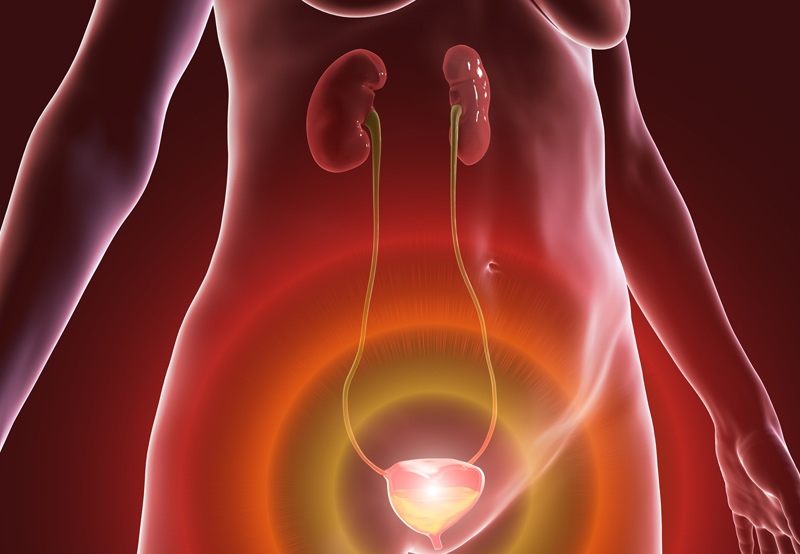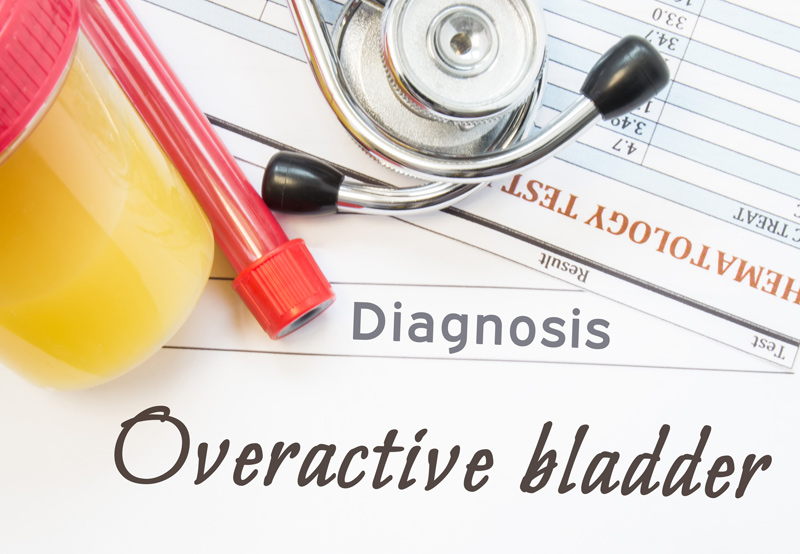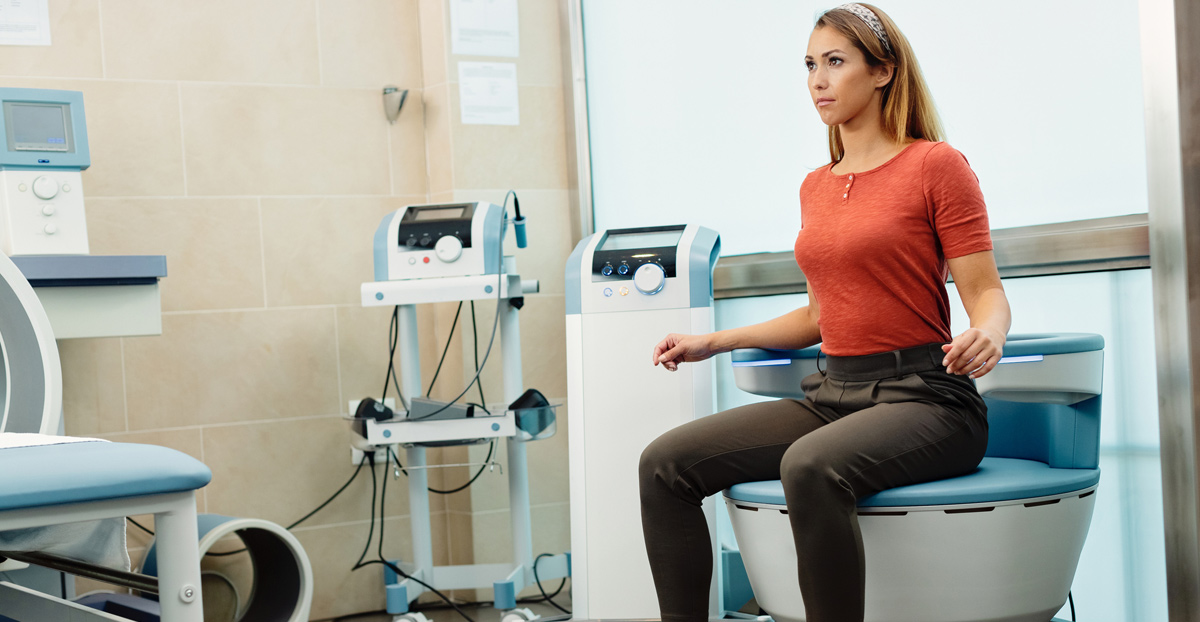

Overactive and underactive bladder are similar conditions that each involve a variation in the bladder’s strength, frequency, and duration of voiding.
Overactive Bladder
Overactive bladder (OAB) is urinary urgency that may involve involuntary loss of urine without the presence of a urinary tract infection or other obvious pathology. An estimated 11% of people worldwide suffer from overactive bladder.
Patients with overactive bladder may experience increased urinary frequency, urinary urgency (a sudden, compelling desire to urinate that may be difficult to suppress and replaces normal urge to urinate), nocturia (when the need to urinate multiple times during the night interrupts sleep), and urgency urinary incontinence (the involuntary loss of urine in association with urgency).

Patients with overactive bladder may be suffering from the following conditions:
- Urinary tract infection
- Malignancy
- Pelvic floor muscle dysfunction
- Urinary calculi (stones)
- Diabetes
- Polydipsia
- Interstitial cystitis/bladder pain syndrome (IC/BPS)
- Neurogenic bladder
To accurately diagnose patients with overactive bladder, a physician will review medical history, conduct a physical examination, and perform urinalysis. The physician will need to screen for other conditions that may be associated with overactive bladder, such as constipation, recurrent urinary tract infection, pelvic floor muscle dysfunction, pelvic organ prolapse, bladder cancer, prostate obstruction, hematuria, limited mobility, and excessive consumption of fluid and/or caffeine.
During the pelvic exam, the physician will assess the patient for pelvic floor muscle hypertonia, skin breakdown, and perineal reflexes. In women, assessment will cover pelvic organ prolapse and genitourinary symptoms of menopause. Men will undergo a digital rectal exam to assess for nodularity or enlargement.
Urinalysis will also be done to check for urinary tract infection and hematuria. Additional testing and measures that may be done to diagnose OAB include intake-voiding diaries, post-void residual, urine culture, and psychometrically validated symptom questionnaires.
Treatment For Overactive Bladder
The primary treatment for OAB is behavioral therapies, such as bladder training, fluid management, bladder control strategies, pelvic floor muscle training (PFMT), and urgency suppression.
Patients may also benefit from biofeedback, which is the use of electronic monitoring of an automatic bodily function to train a patient to acquire voluntary control of that function. In the case of pelvic floor disorders, an external or internal voltage or pressure sensor will assess pelvic floor muscular activity and the physician will provide visual or verbal feedback to the patient. This information will help guide pelvic floor physical therapy.
Secondary treatment for underactive bladder may include medication.
Underactive Bladder
Overactive bladder’s opposite condition, underactive bladder, is less common and receives less attention than overactive bladder. It is typically defined as prolonged bladder emptying or a failure to achieve complete emptying within a normal amount of time. Patients with this condition may not be able to sense when the bladder is full and cannot sufficiently contract the bladder muscles in order to empty it.
Symptoms can be similar to that of overactive bladder, including increased frequency and urgency. Underactive bladder can also result in hesitancy, straining to void, and recurrent infections.
Underactive bladder has been associated with diabetes mellitus, neurogenic complications, problems with muscle tissue, side effects of medication, injury, and aging. Sometimes, overactive bladder can lead to the development of underactive bladder due to changes in the bladder wall and muscle structure.
There are fewer options for treating underactive bladder compared to overactive bladder. Currently, oral medications for the treatment of underactive bladder are not available. Patients may be instructed to double void when going to the bathroom. Other treatment approaches can include intermittent catheterization or an indwelling urinary catheter.
For patients with diabetes mellitus, there is a need to prevent overdistension of the bladder and decrease residual urine. These patients may need to follow scheduled voiding. New approaches for treating underactive bladder are being explored.

